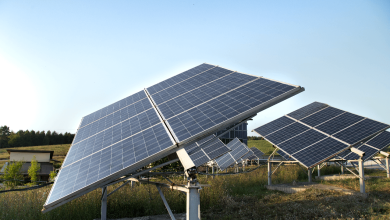Charting a Course for Climate Resilience: The Great Lakes in 2023

The Great Lakes, a massive system of interconnected freshwater lakes in North America, have long been an ecological and economic cornerstone of the region.
The topic of discussion is the condition of the Great Lakes, and it is anticipated that climate change will result in significant changes to the region’s weather patterns.
More is the key, according to Richard Spinrad, administrator of the National Oceanic and Atmospheric Administration.
Spinrad stated at the State of the Great Lakes forum that climate change will result in increased lake effect snowfall, more fluctuations in the Great Lakes water levels, and an increase in smoke from wildfires across the globe.
“We are increasing the system’s energy input. That’s the main issue with climate change, he stated. “Somehow, it has to be released. These storms are going to manifest as it, and they will have a significant effect.
Being ready is the best thing that the region can do, according to Spinrad.
“When planning, a city like Cleveland needs to consider what will this accomplish,” he said. “Are we ready? Are we ready for the upcoming changes in snowfall in terms of our infrastructure, specifically our snow removal infrastructure? Are we ready for things like dangerous algal blooms or hypoxia in the lake to change?
According to Spinrad, new technologies—such as artificial intelligence (AI)—are making it easier to recognise trends and effects related to climate change.
Because Cleveland and the Great Lakes are important to the region’s trade and finances, Spinrad stated that climate changes affecting Lake Erie will have an impact on the region’s infrastructure, health, and economy.
“Everyone of these facets of our work fits into the Cleveland economy, the financial system, and the educational system,” Spinrad stated. First and foremost, how much of Cleveland is impacted by trade that passes through the city? Well, knowing the dynamics of the environment is necessary for 95% of trade. What about this situation’s energy security? How about the security of water?
Nevertheless, funding shortages, algal blooms, or poor water quality are not the main obstacles to building climate resilience. Rather, it’s a deficiency in environmental and climate education, according to Spinrad.
“In Cleveland, if you ask people on the street what their top three or four concerns are, you might expect to hear certain things. “I’m concerned about the effects that climate change and environmental change will have on my family and me.” We must give that more weight.”
According to Spinrad, more people are becoming aware of climate change as its effects become more apparent. However, he also stated that the area needs to keep up focused education initiatives to spur change.
The Great Lakes in Peril
In recent years, the Great Lakes have been grappling with various environmental challenges. These challenges, which are exacerbated by climate change, pose significant threats to the region’s health and sustainability.
Water Levels on the Rise
One of the most prominent climate change effects on the Great Lakes is rising water levels. The lakes have experienced fluctuations in water levels over the years, but recent trends point to a substantial increase. High water levels have caused erosion, flooding, and damage to shoreline properties, leading to extensive economic costs. In the first few months of 2023, many areas around the Great Lakes have faced severe flooding, displacing residents and affecting infrastructure.
Changing Ecosystems
The ecological balance of the Great Lakes is also under threat. Warmer water temperatures are influencing the distribution and behavior of fish species, while invasive species like Asian carp are proliferating. These changes can have detrimental effects on the fishing industry, local economies, and the overall health of the lakes. Additionally, extreme weather events and changing precipitation patterns can lead to nutrient runoff into the lakes, promoting harmful algal blooms that can poison drinking water and harm aquatic life.
Impact on Water Quality
Water quality in the Great Lakes is a major concern. While efforts have been made to reduce pollution, factors like warming temperatures and agricultural runoff are making it harder to maintain water quality standards. Harmful algal blooms, fueled by excess nutrients and warmer waters, have threatened the drinking water supply for millions of residents. The city of Toledo, Ohio, experienced a water crisis in 2014 when toxic algae tainted Lake Erie, the primary water source for the city. The threat of similar incidents looms large as climate change worsens these conditions.
Threats to Biodiversity
The Great Lakes region is home to a diverse range of plant and animal species, but many are vulnerable to climate change. Iconic species like the Lake sturgeon and lake whitefish could face population declines due to changing environmental conditions. Likewise, the health of wetlands, forests, and other natural habitats in the region is at risk. Climate-induced shifts in these ecosystems can have cascading effects on biodiversity and the overall health of the Great Lakes.
Planning for a Sustainable Future
To mitigate the effects of climate change on the Great Lakes and ensure their long-term sustainability, a comprehensive approach is essential.
Investing in Infrastructure
One crucial step is to invest in infrastructure that can withstand the consequences of rising water levels and more extreme weather events. Protecting shoreline properties and critical infrastructure, such as water treatment facilities, is essential to avoid the economic and environmental costs of flooding.
Restoring and Protecting Ecosystems
Efforts to restore and protect ecosystems around the Great Lakes are crucial. This includes controlling invasive species, improving water quality through pollution reduction measures, and conserving natural habitats. By bolstering biodiversity and ecosystem resilience, the region can better adapt to the changing climate.
Monitoring and Management
Enhanced monitoring and adaptive management practices can help officials and communities stay informed and respond effectively to climate change-related challenges. Early detection of problems like harmful algal blooms and infrastructure vulnerabilities can help prevent disasters and protect public health.
Promoting Sustainable Practices
Encouraging sustainable practices is another key aspect of safeguarding the Great Lakes. Responsible land use and farming practices can reduce nutrient runoff, while strict regulations can limit industrial pollution. Communities and industries around the Great Lakes should actively participate in conservation efforts.
International Cooperation
The Great Lakes are shared by the United States and Canada, making international cooperation vital. Both countries must work together to address issues like water quality, invasive species, and ecosystem management. Furthermore, international agreements can promote the shared responsibility of protecting these invaluable freshwater resources.
Read More: France’s White Hydrogen Bonanza: A Hope for a Greener Earth
Climate Change Mitigation
Ultimately, the most effective way to safeguard the Great Lakes is to address the root cause of the problem: climate change. Reducing greenhouse gas emissions on a global scale is essential to slow down the warming of the Earth and the resulting impacts on the Great Lakes. Governments, businesses, and individuals all have a role to play in reducing emissions and transitioning to cleaner energy sources.
Conclusion
The state of the Great Lakes in 2023 paints a concerning picture of the challenges the region is facing due to climate change. Rising water levels, changing ecosystems, deteriorating water quality, and threats to biodiversity are all significant issues that require immediate attention. To protect this vital natural resource and the communities that depend on it, the region must invest in infrastructure, restore and protect ecosystems, practice sustainable management, and collaborate at an international level. Moreover, addressing climate change itself is pivotal to ensure the long-term health and sustainability of the Great Lakes. Only through these collective efforts can the region hope to weather the storm of climate change



